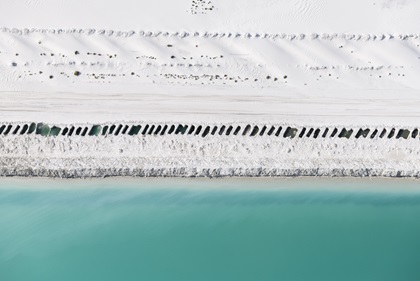‘Flamping’ across the US
Flying and camping with the airplane offer the ultimate freedom for these pilots
After flying and camping with Rusty, a trusty Cessna 172, in the Northeast, Filip Wolak and Sarah Tamar dreamed of doing the same on a trip across the country.
“Flamping,” as they call it (flying and camping combined into one word), “is all about taking an airplane with a nice set of camping gear in the back,” Wolak said.
Opportunity for their grand adventure came knocking early in the U.S. coronavirus pandemic.
Wolak, a flight instructor and professional photographer in New York City, watched assignments he had scheduled for March, April, and May disappear overnight. Tamar, a professional Caravan seaplane pilot with Tailwinds, suddenly had the month of May open as the pandemic delayed the start of her flying season from May 1 to June 1. The two decided that May—the height of the coronavirus lockdown across the United States—would be the best time to embark on their flamping adventure.
“I had this empty month where I could have stayed on the ground and been kind of sad at home,” Tamar said, “Or we could’ve taken this trip that we’ve talked about doing.”
“Why not try to quarantine away from people together with Rusty?” Wolak said. This would be their form of “ultimate social distancing.”
The two removed the back seat of the 1973 Skyhawk and packed everything they needed to be mostly self-sufficient for two weeks: light chair and table; two boxes filled with a tent, mattress, lights, powdered soup, spices, bread, a stove, and a little container of gas; a carry-on with clothing (because a backpack is not convenient for flamping, according to Wolak); a cooler in the baggage compartment; and basic tools for working on the airplane if needed.
Wolak and Tamar had 20 days to cross the country and return to New York City, flying the Cessna 172 only in VFR conditions. They had a list of sights they wanted to see from the air—some personal bucket-list items and others to document the impact of the coronavirus pandemic from the air (see "Postcards: Flying the Empty Skies" in the September 2020 issue of AOPA Pilot)—but most of their flight planning occurred day to day on the trip to navigate around weather and terrain. The plan that they determined to stick with from the outset, though, was to blog and post photos of the trip each day on Wolak’s Flamp Across America page.
“The first night we were so ecstatic to be out there” that they decided to try to sleep in the cockpit rather than in the tent at Noble County Airport in Caldwell, Ohio, Tamar said. “We’ve never slept in this plane before. Let’s try it.”
Wolak and Tamar had spent a lot of time in Rusty—Wolak owns the aircraft, and he taught Tamar how to fly in it in 2013—but they experienced a whole new side of the aircraft by camping in it instead of under its wing. Turns out, the cockpit isn’t the best place to sleep overnight, particularly at an airport that offers a fly-in camping area near a lake at the Wolf Run State Park.
“I wouldn’t call it glamorous (or warm, roomy, or comfortable) but it surely was something to check off the list,” Tamar wrote in her Day 2 post of the night’s sleep.
 Along the trip, Wolak photographed a “dormant” John F. Kennedy International Airport; Delta Air Lines aircraft parked on a storage ramp in Wilmington, Indiana; empty amusement parks; and other eerie sights associated with the coronavirus, but he also captured the beauty of the countryside from the Plains to the Mountain West.
Along the trip, Wolak photographed a “dormant” John F. Kennedy International Airport; Delta Air Lines aircraft parked on a storage ramp in Wilmington, Indiana; empty amusement parks; and other eerie sights associated with the coronavirus, but he also captured the beauty of the countryside from the Plains to the Mountain West.
A highlight for Tamar was Bonneville Salt Flats and evaporation pools near Salt Lake City: “They’re so stunning from the air. It looks like an alien landscape and the colors are out of this world,” she recalled. “Being able to fly over them low and slow to photograph them and film was so surreal, so awesome.” A close second would be flying low and slow around the Lake Powell area in Arizona, which features “winding, insane canyons going through this beautiful winding lake river area … I’ve never done any kind of flying like that before so that was huge, eye opening, and really, really fun to fly.”
Flying over the Grand Canyon at a time when tour operations were shut down because of the pandemic was particularly memorable for Wolak, who said it was “just us and no one else.”
Photographing the Potash Mine and evaporation ponds near Moab, Utah, was one of Wolak’s bucket-list items because they looked “spectacular from the ground” when he was driving through the area three years ago. Viewing the bright blue evaporation ponds with “your naked eye from the window of the airplane…unbelievable.”
The two returned with plans for more—flamping in the Northeast during the peak fall foliage window and crossing the country again (Wolak was partway across the country on a second flamping trip when we talked in August) and a hope that other pilots would pick up the hobby and experience the self-sufficiency of flying and camping that Wolak calls the "manifestation of the ultimate freedom.”



















